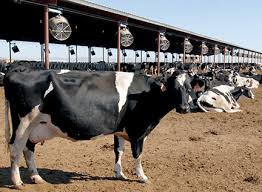‘Govt must replicate Command dairy’
THE Government should replicate initiatives such as Command Agriculture and Pfumvudza/Intwasa farming schemes in the dairy industry to grow national milk production, as producers are currently unable to meet demand in the market, a key industry player said.
At the peak of the country’s milk production capacity in 1990, Zimbabwe produced 256 million litres, output has dropped significantly over the years, totalling only 79 million litres in 2021.
Mr Antony Mandiwanza, the chief executive of Zimbabwe’s largest milk producer, dairibord, said production was expected to reach 90 million litres in 2022 on the back of increased investments by the private sector as support rendered to farmers by the Government.
“One interesting feature on milk supply is that we are beginning to see green field projects — they are quite a number of new entrants to grow milk with very ambitious programmes that will contribute to growing production in the country. So we are anticipating a US$10 million growth over what was achieved in 2021,” he said.
He added that the supply gap was still significant, and as a country, there was a need to work harder together to narrow that gap.
Mr Mandiwanza said the Government should play a developmental role and have frameworks and models on how to grow dairy farming with initiatives similar to those implemented to increase grain output such as Command Agriculture and Pfumvudza/Intwasa.
Under these initiatives, the Government supplies key inputs and some equipment to farmers before the planting season and this has resulted in improved hectarage and output.
The Command Agriculture has since been remodelled to the CBZ Agro-Yield, now administered by and funded through CBZ Holdings in partnership with the Government.
The programme, which provides financing support to farmers for production of crops such as maize and soyabeans, was launched in 2019 for the 2019/20 farming season and beyond.
According to Mr Mandiwanza, a sustainable model for Zimbabwe would be a low cost milk production in order to be competitive in the region.
“Growing grass, like other competitors are doing, is the best way to get your protein from within. The farmers need to grow their own stock feed and that will mitigate the cost base,” he said.
Zimbabwe’s annual milk demand stands at 140 million litres while the national herd is at 40 000 compared to 190 000 at peak.
Mr Mandiwanza noted that milk production has had slight stability growth from 2017 to 2021 but far from the milk that is needed to meet market demand.
Government has been supporting the dairy sector through the national budget by introducing a 5 percent duty on dairy imports to capacitate the Dairy Recovery Programme.
Under the livestock and recovery growth plan, milk production is expected to rise from 79,9 million litres to 150 million litres while the dairy herd would grow from 39 980 to 60 000 by 2025.
Previously, growth has been slow in terms of dairy animal numbers and milk production from both the large scale commercial and smallholder sectors in the last decade owing to loss of valuable genetic material.
According to players in the sector, uncompetitive stock feed prices on the domestic market, cause Zimbabwe to have the highest cost of raw milk at US$0,66 per litre compared to regional counterparts.
The price of raw milk in South Africa ranges from US$0,35/l to US$0,37/l, while that of Zambia costs US$0,33/l to US$0,35/l.
The uncompetitive prices of stock feed have resulted in low milk yields per cow as farmers
compromise on feed mixes in an effort to become viable.
Lands, Agriculture, Fisheries, Water, Climate and Rural Development Minister Dr Anxious Masuka earlier in the year said that the Government’s three aspects are to achieve a vertical growth, which refers to the increase of milk production of milk per cow, from the current levels to 20 litres per day, continuous importation of improved genetics and facilitating own farm feed production.
He said the Agriculture and Food Systems Transformation Strategy launched in 2020 is anchored by the Agricultural Recovery Plan, Livestock Growth Plan, the Horticulture Development Recovery Plan, Solar Irrigation and Rehabilitation Plan and the Agricultural Information Management Systems.
The Livestock Growth Plan envisages that the sector will grow to a US$1,9 billion industry by 2023 up from US$0,9 billion currently.
“The livestock growth plan has a very strong private sector recovery and growth plan. At peak production, Zimbabwe had 42 000 milking cows with a total dairy herd of 19 000 producing 260 million litres in 1990.
“Since our lowest point in 2009, where the country produced 30 million litres, Zimbabwe is on a recovery path and the average growth in annual milk production has been 11 percent,” Dr Masuka said.
He said the Government’s plan is to rebuild capacity for both the large scale and small holder dairy sector.
At the moment, the Government is concentrating on rebuilding the smallholder dairy sector, and in this regard ARDA has awakened, revitalising the dairy development programme, and has accomplished 30 projects.
As a result, the small holder is now contributing four percent of total national milk production, although production per cow per day is low at 8 litres, we aim to increase this to at least 12 litres per day.-The Herald










